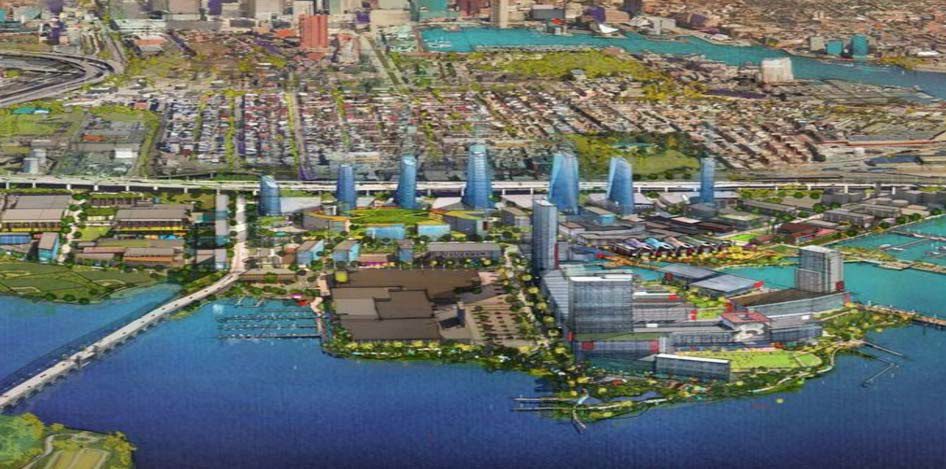
This rendering of what Port Covington was expected to look like once the project was completed accompanied a 2016 Shelterforce article on the project. Things did not go as planned. Image courtesy of Sagamore Development
In 2001, a coalition of community groups reached a deal with the developers of a large entertainment district surrounding the Staples Center in Los Angeles. In exchange for the developers’ commitment to provide a slate of benefits to the community, the activists agreed to support the project, resulting in what’s widely considered the nation’s first Community Benefits Agreement (CBA).
Two decades later, CBAs have spread across the country, becoming a widely used tool for ensuring that the needs of impacted residents are considered during the planning process, especially for projects that receive sizable taxpayer subsidies. Advocates have successfully negotiated CBAs to secure commitments for affordable housing, local hiring, minority-owned business contracting, environmental mitigation, workforce programs, and other pressing needs for their communities.
But for every successful CBA, there are several others that failed to fulfill their promises, or to even get off the ground in the first place. For community leaders, learning to negotiate strong, binding agreements that truly address the needs of residents has been a process of trial and error.
So, what lessons can be gleaned from past CBAs, and what’s the future of the community benefits movement? Here’s an update on some of the deals Shelterforce has covered over the years and where those agreements stand now.
Atlantic Yards/Pacific Park and the “Battle for Brooklyn”
In 2003, New York City developer Forest City Ratner announced plans to build a 19,000-seat basketball arena near Downtown Brooklyn, complete with housing, office, and retail space. Unsurprisingly for a development of this scale, the 22-acre Atlantic Yards plan (renamed “Pacific Park” in 2014) generated immediate criticism from New Yorkers.
To win community support, the developer convened a select group of community organizations and offered to negotiate a benefits plan. The resulting CBA—New York City’s first—promised thousands of jobs and low-income housing units, along with community facilities, workforce development, environmental initiatives, and other perks. In exchange, Forest City Ratner received over $200 million in public subsidies.
More than 15 years later, the promised jobs and affordable units have fallen short of targets, and many view Atlantic Yards as an example of a CBA gone wrong.
Initial controversy over the development centered on its questionable community support. The developer included language in its contracts requiring displaced residents to testify in favor of the project at public hearings in exchange for a buyout.
One of the entities negotiating the CBA, Brooklyn United for Innovative Local Development (BUILD), was assembled just after negotiations began, and dispersed just after the arena opened in 2012. Later it emerged that Forest City Ratner had paid the group $100,000 for salaries and $38,000 to distribute a developer-funded newspaper, Brooklyn Standard. Opposition groups, meanwhile, were not included in negotiations.
Norman Oder, a watchdog journalist whose Atlantic Yards/Pacific Park Report blog has covered the development extensively, has called BUILD and other groups who signed the agreement “essentially astroturf.” The project’s most prominent opposition group, Develop Don’t Destroy Brooklyn, is now defunct. BrooklynSpeaks, a remaining advocacy group that has pushed for greater transparency and public involvement with the project, did not respond to a request for comment.
Forest City Ratner secured state sponsorship for the project from the Empire State Development Corporation in 2005, allowing Atlantic Yards to override the city’s rigorous land use review process. This move effectively excluded the local community board, the city planning commission, and the council from weighing in on the project.
Oversight has also been lacking. The CBA required the developer to hire an independent compliance monitor to report on the agreement’s progress. The monitor was never hired, and the only parties with authority to enforce that clause, the CBA’s signatories, have either since disbanded or have stayed silent.
As part of the deal, ACORN, which was instrumental in shaping the CBA, asked that 50 percent of the 4,500 planned apartments be designated affordable units. To date, just 782 of the promised affordable units have been completed. Most of those units are aimed at middle-income tenants, and many have sat empty for months, despite a severe housing shortage and more than 93,000 applicants, because few people applying through the city’s housing lottery earned enough to qualify. At one of the affordable towers, unfilled one-bedrooms were renting for $2,680 a month, and an individual would have needed a minimum annual income of $93,258 to qualify. After failing to fill the building via the housing lottery, the developer resorted to listing empty units on StreetEasy.
The development has fallen short on the jobs front as well, with consistent reports that far fewer than the 15,000 promised jobs have actually been created (although it’s hard to know for sure, without the compliance monitor in place), that a jobs program secured by the CBA was a sham, and that few of the existing jobs have actually gone to Brooklyn residents.
What are some key takeaways from the Atlantic Yards/Pacific Park CBA debacle?
First, that without a genuine, community-led process, the signatories of a CBA are unlikely to represent the needs of the community, and unlikely to stick around to enforce the terms of an agreement a decade or more down the road. Bypassing a city’s already stringent public review process for land use also creates gaps in community input that are difficult to offset with a CBA alone. And without an effective mechanism for ongoing monitoring, many of a CBA’s promises are likely to go unfulfilled.
Port Covington
In 2016, Shelterforce asked who would benefit from a Port Covington development, a $5.5 billion “city-within-a-city” planned for a small peninsula two miles south of Baltimore’s Inner Harbor. Five years later the question has become, is the project’s CBA still viable?
The original plans for the project included 7,500 affordable housing units, 1.5 million square feet of office space, and 40 acres of public parks.
In exchange for a massive $660 million public financing package and support from a coalition of seven community groups, Port Covington’s developer—Sagamore Development Co.—ultimately agreed to a CBA and related memorandum of understanding worth $135.9 million. The agreement contained promises for local hiring, affordable housing units, a $24/hour minimum wage for infrastructure jobs, a $25 million workforce development program, and other community investments.
A 2016 study estimated the development would create 26,500 new jobs in Baltimore by 2037, but hope for many of those jobs was lost in 2018 when Amazon declined to move its headquarters to Port Covington. Under Armour announced in April of this year that it would scale back plans for a massive headquarters at the site, which Sagamore had estimated would add 10,000 jobs to the local economy, to a significantly smaller footprint with just 1,000 employees.
In 2017, Sagamore assumed a minor investor role in the project after Weller Development Company and Goldman Sachs bought out majority stakes. While the deal stipulates that the CBA’s obligations now belong to a joint venture between the three developers, Urban Revitalization LLC, the dramatic downsizing of the project, along with the shift in ownership, have left some questioning how enforceable the CBA will be.
According to Julian Gross, a Bay Area attorney and expert on CBA negotiations, this sort of transfer of responsibility is exactly the kind of thing that can undermine these agreements, and it’s one of the hardest things to plan for. It’s important to have an experienced attorney who can write a tight, enforceable contract with solid “successors and assigns” language. Even then, extracting the promised benefits from a new party can be a struggle for community groups, who lose much of their political leverage once the CBA is finalized.
“The successors who come in, they don’t have a relationship with you and they don’t remember why the deal was cut at the front end. It’s just an attachment to some document that they signed. Hopefully it’s an attachment to some document they signed!” says Gross. “And now they don’t need anything from you, because the thing that was bargained for—giving up legal claims, political support—those have already occurred.”
Given the project’s uncertain future, and the uncertainty of the benefits its developer promised to deliver, Baltimore’s City Council President Nick Mosby is now calling for a reevaluation of Port Covington’s $660 million Tax Increment Financing package.
Can a CBA Fix a Food Desert?
Pittsburgh’s first CBA was negotiated in 2008, in part to bring a full-service grocery store to a longstanding food desert. While the agreement did achieve that goal, the success didn’t last.
The CBA came about when the Pittsburgh Penguins sought to build a new arena in the city’s Hill District neighborhood. In exchange, a coalition of over 100 community groups secured $8.3 million in funding for community development projects through the CBA.
The Hill House Economic Development Corporation, an affiliate of the Hill House Association, received $2 million from that pot to develop a Shop’n Save supermarket in the heart of the district, where the neighborhood’s majority Black and low-income residents had been without a full-service grocery store for over 30 years. Hill House would maintain ownership of the land beneath the store, with a plan to reinvest the rent payments in the surrounding community.
From the outset, there was skepticism. Some said the area’s population, which had been on the decline for decades, wouldn’t support the store, or the project’s overall $11.6 million price tag. The neighborhood had lost about 45 percent of its population since the 1980s, beginning around the time that the last area supermarket closed. Cheryl Hall-Russell, Hill House’s former executive director, told TribLive that the group had performed several studies that showed the project was indeed viable. (A year before the store’s grand opening, a former colleague accused Hall-Russell and other Hill House staff of misusing funds for the project).
The market opened in 2013, to great fanfare from Hill District residents. Some observers held up the project as an example of the power of CBAs to address a neighborhood’s challenges, like a lack of options for healthy food, while letting the community maintain control of its assets.
Unfortunately, the excitement didn’t last. The store failed to generate the anticipated foot traffic. Its owner, Jeff Ross, eventually stopped paying rent in 2018, explaining that he was losing money on the location and that the landlord, Hill House Economic Development Corporation, had neglected maintenance at the property. Shop’n Save shuttered in 2019, leaving the Hill District without a full-service supermarket once again, five years after the grand opening.
By that time, Hill House Economic Development Corporation had been on shaky financial ground for years. The group started jettisoning its real estate holdings in 2018, after years of cutting its community programs and social services. When the store closed, the already underfunded nonprofit was exposed to $1 million in new debt, bringing its total deficit to $11.5 million. The board voted to dissolve Hill House’s operations in 2019 after more than 50 years as a community pillar in the Hill District.
A decade after Pittsburgh’s first CBA was signed, the agreement is viewed as a mixed success. Some have criticized the $8.3 million investment from the Penguins as nowhere near sufficient, considering the $245 million the team’s owners are set to receive in state subsidies. Shop’n Save itself was a financial flop, and the plan to maintain community ownership of the property helped seal the fate of the organization that brokered the deal.
On the other hand, the agreement paved the way for future CBAs in Pittsburgh, including another in the Hill District over a local hospital’s expansion, as well as a 2018 campaign to force all developers getting public subsidies in Allegheny County to enter into CBAs with government agencies and community groups.
Despite the store’s failure, the agreement deserves credit for bringing about the district’s first supermarket space in decades. The building’s new owners are currently seeking another grocery tenant, possibly with a smaller footprint to fit the neighborhood’s population.
Atlanta’s Community Benefits “Plans”
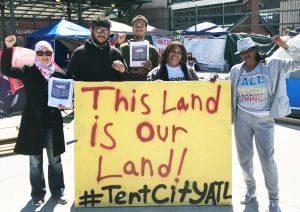
From a 2017 Shelterforce article: Residents of four historically African-American neighborhoods in Atlanta are in the midst of an occupation of Turner Field—the former home of the Atlanta Braves. Photo courtesy of Sherise Brown
Some developers in Atlanta have shown a penchant for providing community benefits, but not of the legally binding, community-led variety.
Atlanta Falcons owner Arthur Blank has invested heavily in the economically ravaged neighborhoods in the shadow of his new $1.5 billion Mercedes-Benz stadium, which is expected to receive $700 million in public funding. Originally, the stadium was projected to cost Georgia taxpayers just $200 million.
In exchange for those funds, the Arthur M. Blank Family Foundation has contributed over $40 million for homes for police officers in the area, as well as parks, a jobs center, and social programs. But those investments came about thanks to a non-binding community benefits “plan” approved by the city council, not a legally binding CBA brokered with community groups. While the neighborhood has seen significant investment around the stadium, it’s come at a cost; rents rose by 20 percent in the three years following the stadium’s 2013 announcement, according to a Georgia Tech study.
Similarly, the fight for a CBA at the site of Atlanta’s former Turner Field resulted in a Community Investment Plan (CIP), not a CBA, from the new owners, Carter Development and Georgia State University. The Summerhill CIP, named after the nearby neighborhood, provides some CBA-like benefits, like an affordable housing set aside of 10 percent of all units, at 80 percent of Area Median Income, but is not a legally binding agreement.
When a campaign for a CBA at the Turner Field site failed in 2017, Shelterforce asked if the neighborhood would soon see longtime residents displaced. According to a 2019 report from the Atlanta Journal Constitution, the harbingers of gentrification are increasingly apparent as the development proceeds. Newcomers to Summerhill are whiter and wealthier than longtime residents, and a smattering of yoga studios, brewpubs, and pricey bakeshops have sprouted up to cater to them. Meanwhile, many lower-income Black residents have left as rents and property taxes rise, the paper reported.
While it’s impossible to know if legally binding CBAs would have made a difference for either of these Atlanta neighborhoods, it stands to reason that a community-led process produces better results for longtime residents than a city- or developer-led prescription.
Citywide CBA Policies
For community groups, winning a CBA often takes many years and vast resources for organizing and negotiation. Even then the agreement only applies to a single project, meaning the benefits won are unlikely to be substantial enough to reverse larger trends toward disinvestment or displacement.
Recognizing this, a coalition of advocates in Detroit fought to replace the project-by-project approach to community benefits with a blanket law requiring all publicly subsidized, large-scale developments to negotiate for benefits with the impacted communities. The resulting citywide Community Benefits Ordinance—the nation’s first—has already been applied to 11 projects and reaped millions in benefits for Detroiters since its adoption five years ago. Still, some say Detroit’s ordinance doesn’t go far enough to counteract a culture of municipal austerity and corporate giveaways.
The Equitable Detroit Coalition (EDC) launched its CBO campaign in 2013 in response to the city’s growing investment of public dollars into private projects, even as Detroit declared bankruptcy with $18 million in debt and cut services for residents. EDC members collected enough signatures to put a robust CBO proposition on the ballot ahead of the 2016 elections. Two days later, two city councilmembers put a second, weaker CBO on the ballot, backed by hundreds of thousands in local advertisements paid for by “dark money” fund Detroit Jobs First, and warning that the original grassroots CBO proposition would drive jobs out of Detroit. Voters adopted the weaker CBO while the grassroots proposition failed, creating a CBO in Detroit that some have called hollow.
Major critiques of the adopted ordinance are that it lacks adequate enforcement mechanisms, applies to too few projects, that the Neighborhood Advisory Councils negotiating these agreements (composed mostly of city appointees) aren’t representative of the affected communities, and that the benefits secured by these non-representative bodies are often insufficient considering the public subsidies at play (in exchange for $20 million in tax breaks for the Detroit Pistons’ new training center, the community received local hiring promises, $100,000 for a workforce program, and a promise to build $2.5 million worth of new basketball courts, for instance).
In some cases, the benefits aren’t even sufficient to mitigate negative consequences of the developments themselves. An expansion project at Detroit’s Fiat Chrysler/Stellantis plant has residents in Beniteau, the predominantly Black, low-income neighborhood abutting the plant, worried about an increase in toxic fumes from the vehicle painting process. Asthma rates in Detroit as a whole are 29 percent higher than the rest of the state, and hospitalizations for asthma in the project’s impact area are among the highest in the city.
The automaker won regulatory approval for increased emissions by cutting its emissions by 10 percent at a nearby plant in the predominantly white and suburban city of Warren. The Detroit People’s Platform called the pollution transfer “textbook environmental racism.”
To compensate Beniteau residents, the Neighborhood Advisory Council that negotiated the CBA over the plant’s expansion secured just $15,000 per home for renovations to mitigate pollution, which neighborhood group Just Beniteau Residents say is nowhere near sufficient. “The Neighborhood Advisory Council did not represent us or respond to our needs. To many of us, they seemed to just take what was offered and said it was what we wanted. No one seems to know how they decided on $15,000 a house,” the group said in a statement.
The nation’s first CBO is clearly flawed but represents incremental progress. In 2018, the Equitable Detroit Coalition proposed a list of amendments to the ordinance. Some popular changes include lowering the threshold to trigger the ordinance (currently it only applies to projects valued at $75 million or more), replacing city appointees on Neighborhood Advisory Councils with elected community representatives, making the agreements legally binding, and extending the negotiation process to make time for meaningful community engagement.
The city council’s Legislative Policy Division is now hosting community meetings to gather input on the possible amendments and is expected to submit a draft bill to the council this year.
Is Detroit’s Ordinance the Future of the CBA Movement?
When Shelterforce last covered Detroit’s CBO in 2017, we asked whether it would inspire community leaders in other cities to pursue their own mandates for equitable development.
In St. Louis, two members of the Board of Aldermen introduced competing bills that year that would have required developers to meet with affected residents and hammer out agreements for community benefits. As with the situation in Detroit, one of the bills was community-driven and ambitious, while advocates considered the second a weaker, preemptive bill.
Michigan Rep. Rashida Tlaib saw the introduction of the watered-down bill as the continuation of the pattern that started in Detroit.
“I call it the fake CBA movement, where they call it a Community Benefits process, but there’s not actually any community engagement, nor the most important principle of a CBA, that it’s legally enforceable,” Tlaib told St. Louis Public Radio.
Neither the grassroots nor the “fake” CBA movement in St. Louis gained steam. Both bills stalled after the first reading and have not been reintroduced.
In late July, St. Petersburg, Florida, passed an ordinance that requires all developments that cost over $2 million and receive more than 20 percent of their funding from the city to provide community benefits. While the bill includes a requirement for developers to hold public meetings—an essential component of any true CBA process—one councilmember criticized that section as lacking in specifics. Unlike a traditional CBA process, the city council, rather than community groups, will have the final say in the benefits package, which will vary based on the funding the project receives, but range from providing affordable housing, to workforce programs, to paying into funds for schools.
A campaign for a citywide community benefits policy in Chicago has shifted its focus since Shelterforce covered it in 2018. ONE Northside, a Chicago community group that fought for years with developers for community benefits at individual projects, spearheaded the campaign, hoping it would allow community members to have a seat at the negotiating table without fighting for it with each new development. The group has since transitioned that work to a campaign focused on strengthening Chicago’s inclusionary zoning policy, according to ONE’s Executive Director Jennifer Ritter.
That’s not a bad strategy, according to Gross, the Bay Area attorney and CBA expert.
Inclusionary zoning is one way to bring about the affordable housing component that many CBAs provide, without having to fight for it on a project-by-project basis, and without a citywide mandate for CBA negotiations. Other needs are best addressed on a community-wide basis as well, Gross says. Advocates could spend their time fighting for living wages at a particular development, for instance, or they could spend that time fighting to raise the minimum wage citywide. Such laws give tangible benefits to entire communities, without the resource-intensive CBA negotiating process.
Still, individual CBAs remain important tools for addressing the acute, immediate needs of residents impacted by major developments. Twenty years after the Staples Center agreement, Gross sees the future of CBAs as one tool among many for equitable development, alongside good generally applicable laws that support job training, affordable housing, and livable wages, as well as robust, community-led land-use processes.
“If you really have all that in place, when a big project comes along, you wouldn’t be looking at that project to be a leader on these issues that really are systemic,” says Gross. Instead, “the community would look at that project and ask, what is really, specifically needed?”


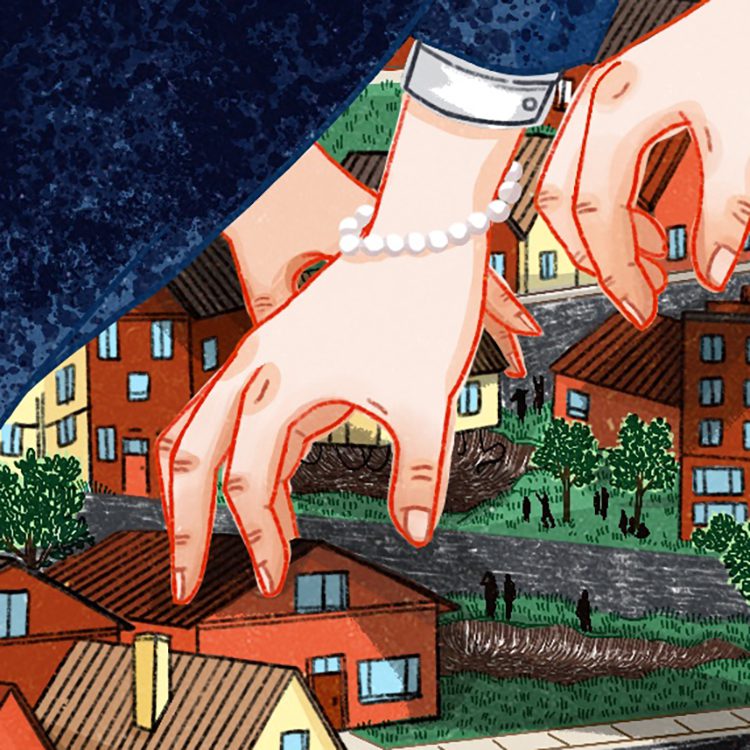
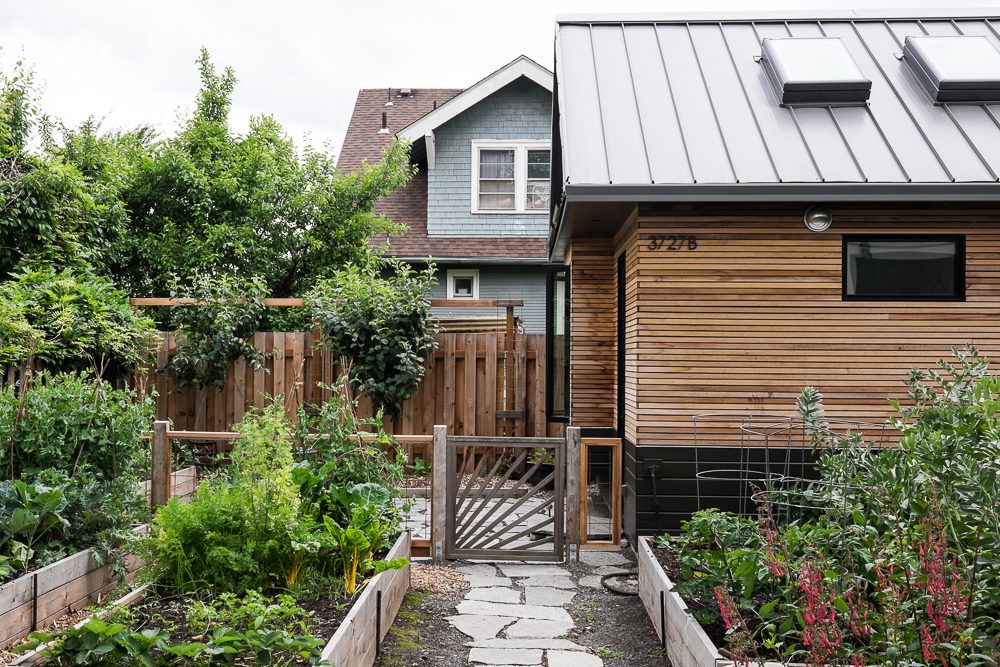
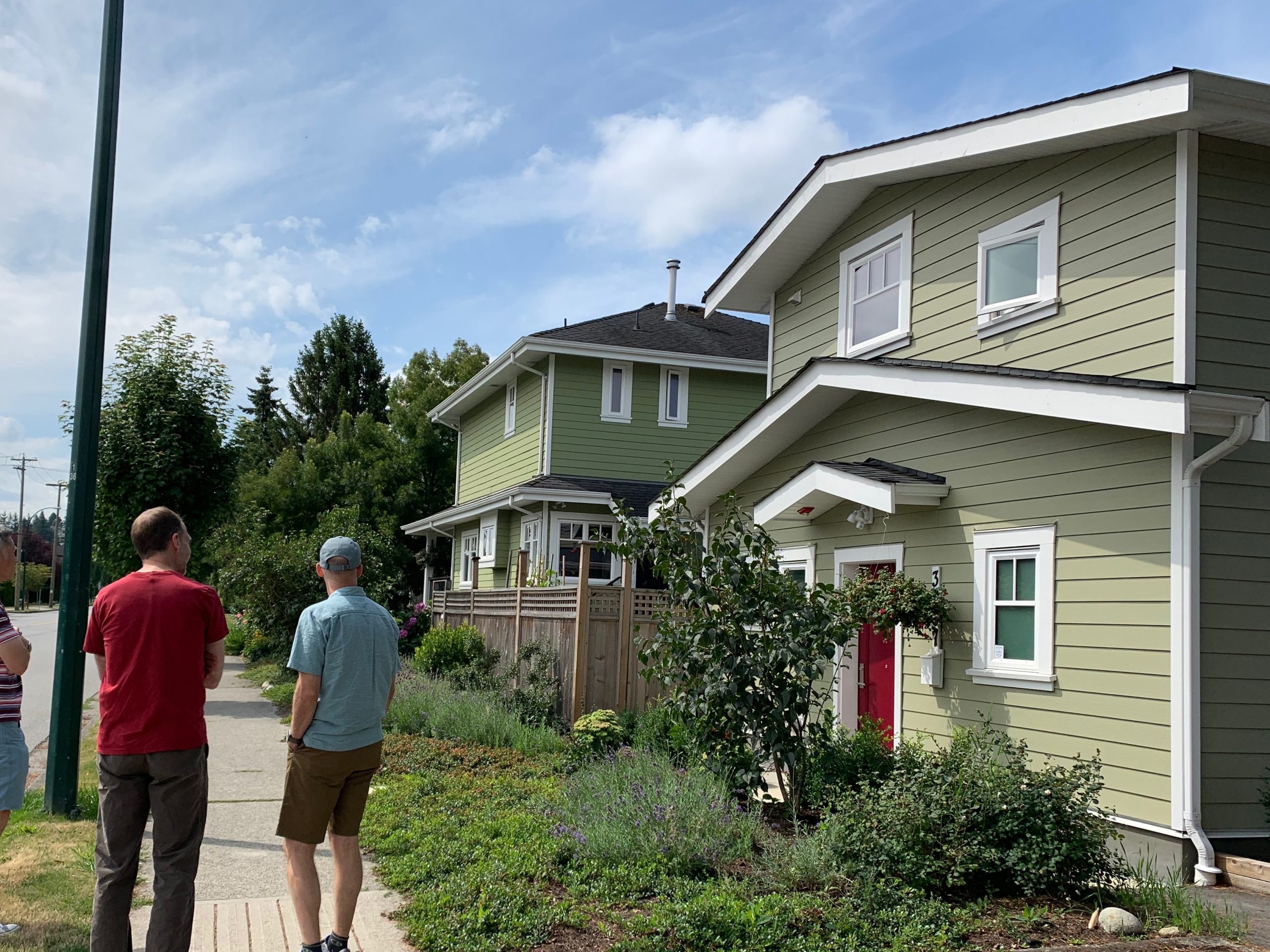
Comments